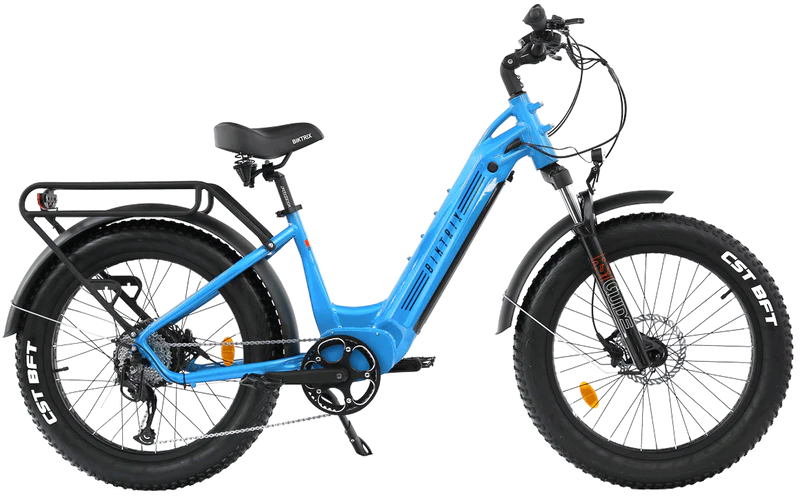
Rise of E-Bikes: Unveiling the Increasing Popularity of Electric Bicycles
Introduction
Electric bicycles, commonly known as e-bikes, have been steadily gaining popularity around the world. These innovative vehicles combine the convenience and efficiency of traditional bicycles with the added power of electric motors, providing a unique and eco-friendly mode of transportation. In this article, we will delve into the rise of e-bikes, exploring their history, benefits, factors driving their popularity, their role in urban transportation, comparison with traditional bicycles, environmental impact, technological innovations, challenges, and future prospects.
History of Electric Bicycles
The concept of electric bicycles dates back to the late 19th century when inventors began experimenting with motorized bicycle designs. However, it was not until the early 1990s that e-bikes gained significant attention with advancements in battery technology. China emerged as a leading manufacturer of e-bikes and played a crucial role in their proliferation worldwide. Since then, improvements in battery efficiency, motor power, and overall design have made modern e-bikes more practical, reliable, and accessible than ever before.
Benefits of E-Bikes
E-bikes offer a multitude of advantages over traditional bicycles, making them appealing to a wide range of individuals. For commuters, they provide an efficient, cost-effective, and time-saving alternative to cars or public transport. The pedal-assist feature allows riders to conquer hills and long distances with ease, promoting physical fitness while reducing the exertion required. Additionally, e-bikes contribute to reduced traffic congestion and air pollution, leading to improved public health and cleaner environments.
Factors Driving the Popularity of E-Bikes
Several factors have contributed to the surging popularity of e-bikes. Rising fuel costs and increasing concern for the environment have prompted individuals to seek sustainable transportation options. E-bikes fit this criterion perfectly, offering a greener alternative to fuel-powered vehicles. Furthermore, technological advancements have made e-bikes more affordable, reliable, and aesthetically appealing, attracting a wider consumer base.
E-Bikes in Urban Transportation
With the rapid urbanization and congestion in cities worldwide, e-bikes have emerged as an ideal solution for urban transportation. Their compact size enables easy maneuverability through traffic, allowing riders to reach their destinations swiftly. Incorporating e-bikes into existing transportation systems, such as bike-sharing programs or dedicated cycling lanes, promotes a seamless and integrated commuting experience, reducing reliance on cars and public transport.
E-Bikes vs Traditional Bicycles
While both e-bikes and traditional bicycles serve as eco-friendly transport options, they differ significantly in terms of speed, range, and exertion required. E-bikes offer riders the ability to cover longer distances at higher speeds while minimizing physical strain. Traditional bicycles rely solely on human power and often limit riders to shorter commutes. It is crucial to find a balance between preserving the health benefits of traditional cycling and embracing the convenience and efficiency of e-bikes.
Environmental Impact and Sustainability of E-Bikes
The adoption of e-bikes has positive implications for the environment. By replacing conventional vehicles with e-bikes, carbon emissions and air pollution are significantly reduced. Furthermore, e-bikes consume less energy than electric cars or motorcycles, making them a more sustainable transportation option. However, it is essential to consider the environmental impact of e-bike production, particularly regarding battery disposal and the sourcing of raw materials.
Technological Innovations in E-Bikes
Advancements in technology have played a vital role in enhancing the performance and attractiveness of e-bikes. Lithium-ion batteries have become the go-to power source due to their high energy density and longer lifespan. Additionally, smart features such as integrated navigation systems, smartphone connectivity, regenerative braking, and advanced pedal-assist modes have greatly enhanced the overall riding experience, attracting a wider audience to embrace e-bikes as a viable mode of transportation.
Challenges and Future of E-Bikes
Despite their growing popularity, e-bikes still face challenges that need to be addressed. These include regulations regarding their use on roads and bike paths, potential safety concerns, and the availability of charging infrastructure. However, as society becomes more environmentally conscious and cities strive to become more bicycle-friendly, it is expected that these challenges will be overcome, fostering a promising future for e-bikes. Moreover, ongoing research focuses on improving battery technology, reducing costs, and increasing range, paving the way for even more efficient and sustainable e-bikes.
Conclusion
As e-bikes continue to gain traction, they have revolutionized the way we perceive transportation, offering a greener, healthier, and cheaper alternative. With their numerous benefits, from increased efficiency to reduced carbon emissions, e-bikes have established themselves as a significant player in urban mobility. As technological innovation progresses and challenges are addressed, the future of e-bikes looks promising, shaping a transport landscape that is both sustainable and convenient.

